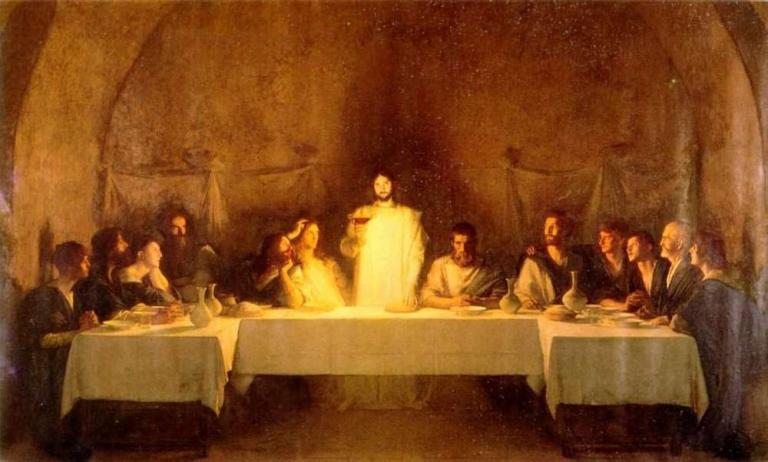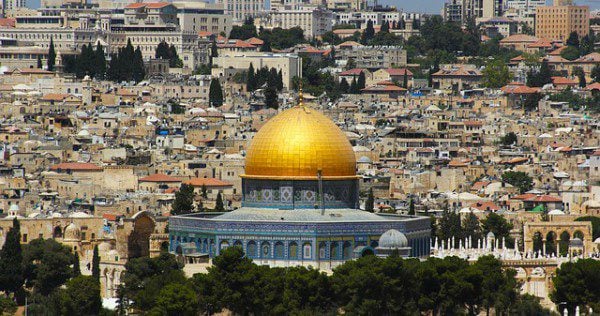There is an ugly new anti-Semitism, virulent in Europe and driving the BDS (Boycott, Divest, and Sanction) movement in this country.
This past weekend it raised its head in our nation’s capital. Jeremiah Wright, who was president Obama’s pastor in Chicago, spoke at a Nation of Islam event titled “Justice or Else!” on the 20th anniversary of the Million Man March.
He told the crowds that “the same issue is being fought today and has been fought since 1948, and historians are carried back to the 19th century…when the original people, the Palestinians – and please remember, Jesus was a Palestinian – the Palestinian people had the Europeans come and take their country,
Jesus was a Palestinian? The implication is that Jesus was not a Jew. Not only does this contradict everything historians know about Jesus, but it is an eerie echo of what the Nazis taught in the 1930s.
Europeans took the country of the Palestinians? This is wrong in all sorts of ways. First, Jews have more historical claim to the land of Israel/Palestine than those called Palestinians. Jews have been on the land for more than 3000 years, while Arabs came there only in the seventh century AD.
Second, the “fight” in 1948 was started by Arabs who attacked the new nation of Israel that was declared by the United Nations. The UN had partitioned the land into two sections, one Jewish and the other Arab. Jews accepted the partition and the Arabs did not.
Critics allege that the UN partition was unfair to Arabs, because non-Jews made up 93 percent of the population of Palestine and 78 percent of the land was left in Jewish hands. But here is what is commonly forgotten: the part of Palestine allotted to Jews was home to a substantial Jewish majority—538,000 Jews to 397,000 Arabs, according to official UN estimates. Besides, the “Jewish national home,” mandated by the League of Nations in 1920, originally included what is now the state of Jordan. Eighty percent of this was given to Arabs, in what was then called Trans-Jordan. The remaining 20 percent was divided in the 1947 partition, which means Jews received only 17.5 percent of what was originally designated to be theirs.[1]
Jews were unhappy because the land they were given did not include Jerusalem, where Jews comprised the largest religious population since the middle of the nineteenth century, and constituted an absolute majority in the city from the end of the nineteenth century. Moreover, 60 percent of the Jewish state was the Negev, an arid desert then thought to be useless.[2] Yet the Jews accepted the UN Partition Plan. The Arabs did not.
Although they were unhappy with the partition, Jews did not rob land from poor Arab peasants, as many of today’s critics suggest. By 1948 Britain had allocated 187,500 acres of cultivable land to Arabs and only 4,250 acres to Jews. So Jews were forced to pay exorbitant prices for arid land to wealthy, often absentee landlords—$1,000 per acre, when rich black soil in Iowa was getting $110 per acre.[3]
By 1947, 73 percent of land purchased by Jews came from large landowners, including Arab mayors of Gaza, Jerusalem, and Jaffa, and leaders of the Arab nationalist movement.[4] In his memoir, King Abdullah of Jordan said the story of Jewish displacement of Arabs from their land was a fiction: “Arabs are as prodigal in selling their land as they are in . . . weeping [about it].”[5]
It is true that hundreds of thousands of Arabs felt compelled to abandon their homes during the 1948 Arab-Israeli War. They fled the violence of war, which was begun by the Arab nations, not Israel. The majority simply wanted to get out of the line of fire. The Syrian Prime Minister Haled al Azm wrote in his memoirs, “Since 1948 we have been demanding the return of the refugees to their homes. But we ourselves are the ones who encouraged them to leave.”[6] The Economist, a frequent critic of Zionists, reported in the October 2, 1948 issue that “the Higher Arab Executive . . . clearly intimated that those Arabs who remained in Haifa and accepted Jewish protection would be regarded as renegades.”
[1] Historic Palestine comprised what is today’s Jordan (approximately 35,640 square miles), Israel (8,019 square miles), Gaza (139 square miles) and the West Bank (2,263 square miles). [2] Aharon Cohen, Israel and the Arab World (Boston: Beacon Press, 1976), 238. [3] Benny Morris, Righteous Victims (New York: Vintage Books, 2001), 111; Abraham Granott, The Land System in Palestine: History and Structure (London: Eyre & Spottiswoode, 1952), 278.










